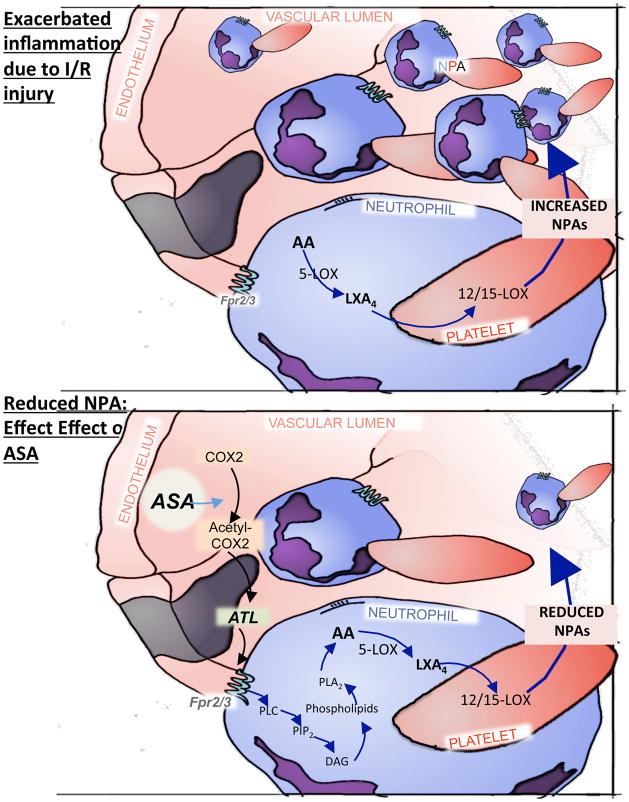Figure 6.
Schematic overview of the important anti-inflammatory role that Fpr2/3 plays in abrogating I/R-induced cerebrovascular injury. I/R leads to the production of Fpr2/-mediated formation of neutrophil/platelet aggregates (NPAs), with neutrophil Fpr2/3 mediating the signal. Aggregates allow the biosynthesis of LXA4 via neutrophil 5-lipoxygenase (5-LOX) and platelet 12/15-LOX. High levels of aspirin-triggered lipoxin (ATL) are also generated during I/R. The effect of ATL on the cerebral microcirculation was absent in mice that lack the Fpr2/3, but pharmacological targeting of the Fpr2/3 (with AnxA1Ac2–26 or ATL) can resolve these inflammatory effects. The administration of aspirin (ASA) is able to produce ATL via COX2 acetylation, which in turn acts on Fpr2/3 and monitors the vascular permeability in the brain. In summary, Fpr2/3 (and we propose the human counterpart ALX/FPR2) promotes the biosynthesis and production of lipoxins and ATL, which in turn regulates the inflammatory process and restores homeostasis in the brain.

